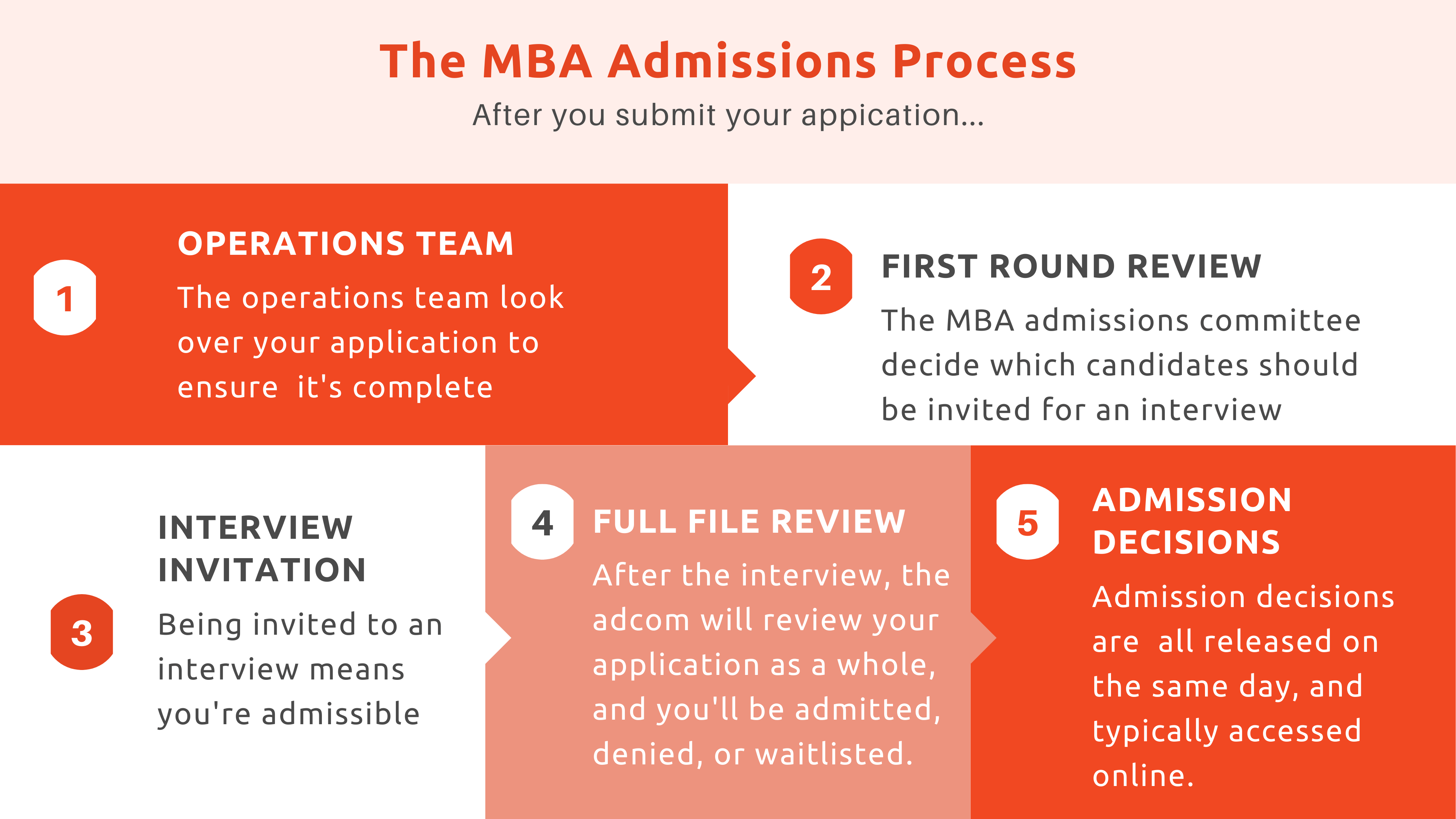You’ve taken the GMAT, honed your resume, written thoughtful essays, and secured your recommendation letters. But once you’ve submitted your application, what’s the next step in the MBA admissions process?
Your application will soon be reviewed by an MBA admissions committee, or adcom, which typically comprises MBA admissions recruiters and directors.
BusinessBecause caught up with Petia Whitmore, former dean of graduate admissions at Babson College Olin Graduate School of Business and founder of My MBA Path, to lift the curtain on what goes on in an MBA adcom and how admissions decisions are made.
Who sees your MBA application first?
The first look at your file is usually done by an operations team.
They process MBA applications and ensure all the required parts have been received. After the application has been processed, you’ll be able to see a checklist with the status of your application—complete if all materials, including the letters of recommendation, have been submitted, and incomplete if anything is missing.
Next, the first round of review will determine who gets invited to an interview. This is often done on a rolling basis. At both stages of review, the MBA admissions committee will look for strong evidence of academic ability, outstanding work experience and career trajectory, and examples of leadership, accomplishment, challenge, and growth.
The adcom is also looking at the risk side—are your career goals realistic, do you have the right reasons to pursue an MBA, and are you a good fit for the type of culture and community the program has?
What does it mean if you’re invited to an MBA interview?
Being invited to the interview is truly great news for any candidate. It means you are ‘admissible’ and the school is interested in you.
An admissions reviewer, after a preliminary evaluation of your candidacy, deemed you potentially worthy of being offered a seat in their MBA class. All your hard work on the admissions test, the essays, and the application forms has paid off. But the race is far from over.
Harvard Business School describes an invitation to interview as ‘a positive indicator of interest but not a guarantee of admission’. At this point, the offer is yours to win. At the interview stage for top MBA programs, on average two or three candidates are vying for a seat in the next MBA class.
What happens after my MBA interview?
Once your MBA interview is completed, your file is ready for a full review—after which an admissions decision will be rendered.
At this stage in the MBA admissions process, usually your file, now complete with interview notes, will be read by another reader, possibly two. Each of them will make an admit or deny recommendation. The readers might read the application ‘blind’, without looking to see what the previous reader recommended.
Most admissions directors will tell you they start with the resume. They might follow by reading the various short answer questions and then dive into the actual essays. The letters of recommendation might be next. The interview is often left for the end.
Throughout this read, they want to see how your overall candidacy has come together. Do the parts connect? Is your story compelling? Are you the type of person that the adcom gets excited about adding to the class?
Then, the adcom holds admissions committee sessions. At Olin, we used to dedicate several full days to deliberations and making decisions for each round of MBA applications. At the end of each adcom session, there will be three groups of candidates: admitted, denied, and waitlisted.
However, many admissions files end up not being placed squarely into the ‘admit’ or ‘deny’ category. That’s when a lot of deliberation happens on the merits of an MBA candidate.
If an admissions recruiter feels passionate about someone, they will advocate on their behalf and make a case why they should be admitted.

When are MBA scholarship decisions made?
Some schools have a process for MBA scholarships that is separate from the admissions decision one.
In my prior experience, the same adcom made merit scholarship decisions immediately after the conclusion of the selection process—each admitted candidate was considered for an award based on the strength of their application. The candidates then received their admissions decision and scholarship award at the same time.
How are MBA admission decisions released?
Once the admissions and scholarship decisions are made and entered into the system, they go through a diligent process of verification to ensure 100% accuracy. And then they go live on the decision release day!
In my life as a dean, the night before admission decisions went live was always a sleepless one. A computer glitch or error messing up the admission decisions is every admission officer’s worst nightmare.
Finally, when I got that big pile of admit letters to sign, I thought of all the candidates on the receiving end—of their story and journey.
The heads of MBA admission teams are often called gatekeepers, but that’s a major misnomer. Being a dean of admissions is first and foremost a tremendous responsibility. You are making decisions that have an impact on people’s careers and even lives, often for a lifetime.
The ultimate goal of your work is to find the outstanding future leaders and innovators that will have a positive impact on society and open the doors for them.
I still remember how excited I was when I got my letter of acceptance back in my own MBA application days!
This article was written by Petia Whitmore, and originally published on My MBA Path
Next Read:



